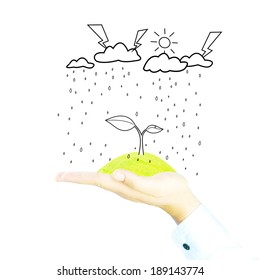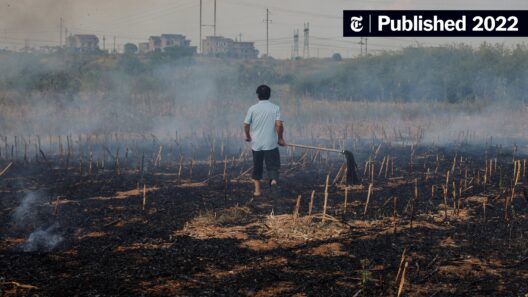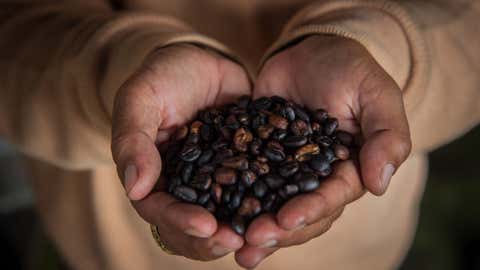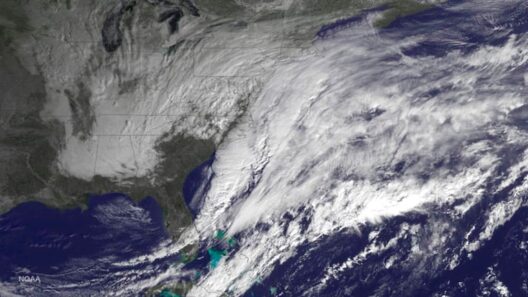Introduction
Global warming, a pressing issue facing our planet, has far-reaching consequences that extend well beyond mere temperature increases. While it is widely acknowledged that higher atmospheric carbon dioxide concentrations can stimulate photosynthesis, the nuances of this interaction lead to a complex and sometimes contradictory relationship between climate change and plant growth. This article explores the multifaceted impacts of global warming on various plant species, ecosystem dynamics, and agricultural productivity, illuminating the pivotal role of climate in shaping flora.
Photosynthesis Under Pressure
The process of photosynthesis is fundamental to plant life, enabling them to convert light energy into chemical energy. Elevated levels of carbon dioxide can initially enhance photosynthetic rates because plants utilize CO2 to produce glucose. However, as global temperatures continue to rise, several factors can undermine these benefits. For one, extreme heat can lead to stomatal closure, reducing CO2 intake and thus curtailing the very process that was thought to benefit from increased atmospheric carbon. In this state of physiological stress, plants are unable to maintain adequate photosynthetic efficiency, leading to diminished growth and productivity.
Water Availability and Its Ramifications
One of the most direct repercussions of climate change on plant growth is the alteration of precipitation patterns. Increased global temperatures initiate changes in hydrological cycles, leading to both droughts and more intense rainfall events. Such extremes can decimate plant communities. During periods of drought, water-stressed plants often experience reduced photosynthetic rates, impaired nutrient transport, and diminished reproductive success. Conversely, in flood-prone areas, excessive rainfall can lead to waterlogged soils, stifling plant roots and creating anaerobic conditions detrimental to growth. In both scenarios, the previously advantageous relationship between carbon availability and plant growth is significantly compromised.
Species-Specific Responses
The response of different plant species to climate change is not uniform. Some plants may thrive under increased CO2 conditions, while others could struggle. For example, invasive species often exhibit traits that enable them to capitalize on changing environments, outcompeting native flora. These invasive species can disrupt local ecosystems, altering biodiversity and changing community structures. Conversely, many endemic species—adapted to specific local conditions—may face extinction as their habitat conditions become untenable. The ecological ramifications of these shifts are profound, as they can erode the resilience of ecosystems and diminish the services they provide, such as carbon sequestration, habitat provision, and soil stabilization.
Soil Health and Plant Interactions
Soil health is an integral component of plant growth, and its quality has been shown to degrade due to climate change. Increased temperatures can lead to accelerated organic matter decomposition, depleting soil nutrients essential for plant growth. Furthermore, changes in precipitation can impact soil structure and water retention, further diminishing nutrient availability. Interactions among soil microorganisms, plants, and climate play critical roles in determining plant health. Beneficial microorganisms can struggle to thrive under extreme conditions, affecting nutrient uptake and overall plant vigor.
Forestry and Carbon Sequestration
Forests are often hailed as the lungs of our planet, absorbing carbon dioxide and storing carbon through photosynthesis. Nevertheless, global warming poses significant threats to forest ecosystems. Higher temperatures can increase susceptibility to pests and diseases, as well as exacerbate the frequency and intensity of forest fires. Deforestation amplifies these issues, disrupting carbon storage capabilities. Additionally, changes in climate can shift the geographic ranges of tree species, forcing them to migrate poleward or to higher elevations. Such migrations can lead to mismatched species assemblages or even forest die-offs, further hindering the carbon sink capacity of these ecosystems.
Agricultural Implications
The agricultural sector faces unprecedented challenges due to the juxtaposition of rising temperatures and altered precipitation patterns. While some crops may experience initial growth spurts from elevated CO2 levels, the subsequent heat stress, water scarcity, and increased incidence of pests and diseases can significantly counteract these benefits. Crop yields are anticipated to decline, particularly in regions already vulnerable to food insecurity. Farmers must adapt to these new realities, implementing resilient agricultural practices that account for shifting growing seasons, sustainable water management, and integrated pest management strategies.
Mitigation Strategies and Future Outlook
In response to the intricate and precarious relationship between global warming and plant growth, a multi-faceted approach towards mitigation is imperative. Reforestation, sustainable land management, and the preservation of biodiversity are vital to enhancing ecosystem resilience. Implementing innovative agricultural practices that promote soil health and optimize resource use can alleviate some detrimental effects of climate change. Additionally, global cooperation and policy initiatives focused on emission reductions are essential for curbing the impending impacts of climate change on plant communities and overall biodiversity.
Conclusion
A nuanced understanding of how global warming affects plant growth is essential for conservation efforts and food security. While initial advantages may be presented under conditions of elevated CO2, the broader implications of rising temperatures, changing precipitation patterns, and altered ecological dynamics often yield detrimental effects. Recognizing and addressing these complexities will be crucial in our ongoing efforts to protect plant communities and sustain the ecosystems upon which humanity relies. As the climate crisis unfolds, proactive strategies will determine the resilience of both natural and agricultural systems, shaping our planet’s ecological future.








